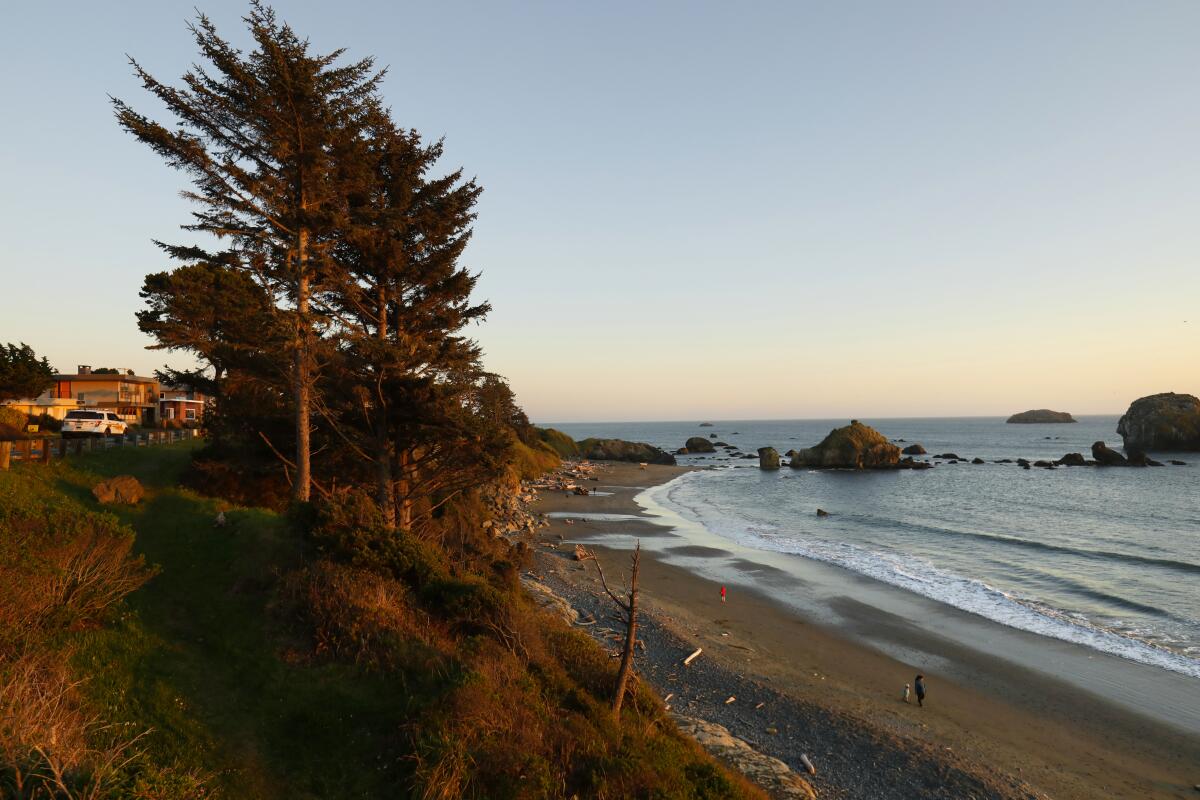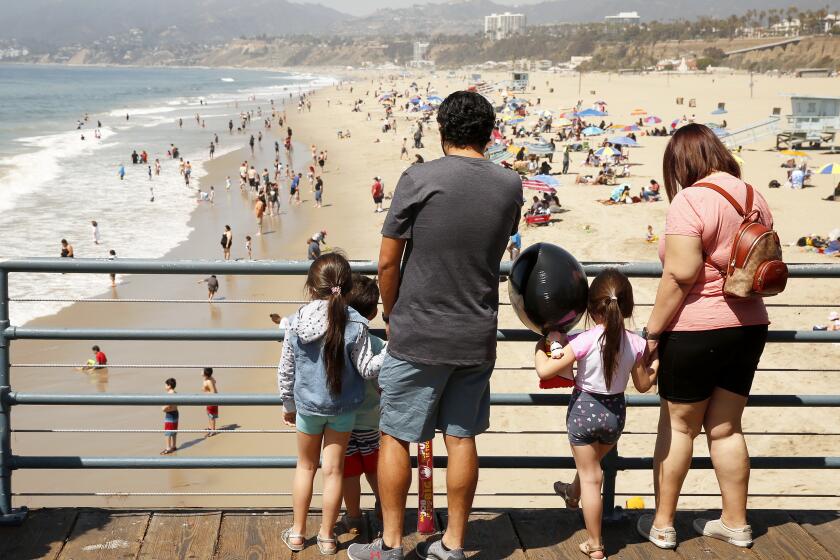No, California doesn’t have a population crisis

- Share via
Californians keep hearing that our state has a population problem: Recent statistics from the Department of Finance show that from July 2021 to July 2022, we lost about 211,000 residents. This, on top of a bigger decline between 2020 and 2021, has reinvigorated talk of an exodus as the state’s population dropped by half a million people in two years.
Should we worry? Is California headed to demographic, economic and political stagnation?
As population scientists, we do see a concerning impact on California’s rural counties — but overall, there are more opportunities in Californians’ relative youth and the state’s ability to attract immigrants than there are alarm bells.
California lost more people than any state besides New York between April 2020 and July 2022, data show. Texas gained nearly 900,000 people in the same period.
Population changes are driven by two factors. The first, which demographers call “natural increase,” is the difference between births and deaths. From July 2021 to July 2022, there were 105,686 more Californians born than those who died. This modest population increase is unlikely to drive significant growth in the future because births in California have been trending downward.
The second population driver is net migration: the number of people coming to a place, whether from elsewhere in the country or from other nations, compared to the number who leave. Net migration is sometimes treated as a popularity contest. Governors boast about how great their state is because people are “voting with their feet.” By this metric, California and New York are no longer the cool kids; people are heading to states like Florida, Texas and Georgia for cheaper housing, jobs and to join family (not necessarily for lower taxes). From 2021 to 2022, 316,668 more people left the state than those who arrived. Following the 2020 Census, for the first time in history, California lost a seat in the House of Representatives. Texas gained two seats and Florida gained one.
California’s biggest recent population losses have been in Los Angeles County (113,048) and the Bay Area’s Santa Clara (16,553) and Alameda (15,959) counties. That may seem to fit the common narrative that young families and knowledge economy professionals in major metro areas are fleeing California. But these are also among the state’s most populous counties — in fact, these losses accounted for only about 1% of residents in each county. Fewer people putting pressure on housing, highways and energy might not be a bad thing in L.A. and the Bay Area.
Rather, as is true across the U.S., it’s small communities in California that are being hollowed out as young people leave and older residents pass away. Proportionally, the state’s largest population losses occurred among rural counties in the Sierra and North Coast, including in Lassen, Del Norte, Plumas and Tuolumne. In these places, population loss means staff shortages or long drives for healthcare, shuttered businesses and a sense of being left behind.
Young Texans starting their careers have been moving West for 15 years.
One commonality across the state — in rural, urban or suburban areas — is that low and middle-income Californians are most likely to leave. Those who move here tend to have higher incomes and more education, underscoring the state’s affordability challenges.
But the age breakdown of California’s population tells a promising story. A big fear about population decline is that with people having fewer children while living longer, there will be fewer income earners (and thus taxpayers) to provide financial support and care for older residents. The U.S. faces this prospect: the Congressional Budget Office estimates that by 2042, we will have more deaths nationally than births.
Californians already have fewer babies than most people in the country. But even so, the state’s population remains younger than the national average. Although the median Californian’s age increased slightly between 2011 and 2021 from 35.4 to 37.6, it was still lower than the country’s average of 38.8 years. California is aging, but the majority of us are under 40, with many years of job growth ahead.
California’s population story also varies by the types of migrants entering or leaving the state. When it comes to domestic migrants — people who move from one U.S. state to another — California lost 406,982 residents between 2021 and 2022. But it’s a different trajectory for international migrants who come from other countries. In that period, 90,314 more people arrived from abroad than the number of Californians who left the U.S.
Our state has always taken in a significant share of new immigrants. But in recent years, COVID lockdowns and Trump administration policies slowed that growth. In 2020, net international migration to the U.S. fell to nearly zero. In that year and in 2021, the U.S. processed fewer permanent residence applications, few refugees entered the country and most temporary migrant visas were curtailed or halted. (One exception was the continued issuing of H-2A agricultural visas, which accounted for 32,000 workers in California in 2021.) Foreign-born residents in 2021 made up a slightly smaller percentage of the state’s population — about 26.6% — than a decade prior, when it was 27%.
We can apply lessons from tackling another existential problem to the climate crisis.
Immigration numbers are beginning to rebound — and that’s a positive trend for California. It’s helpful in a tight labor market, especially because foreign-born residents are much more likely to be working than those born in the U.S. and a boon for California’s tax base. In Canada, immigrant workers accounted for 84% of total labor force growth during the 2010s. The coming decades might well be marked by global competition for migrant workers.
New immigrants to California last year largely settled around the Bay Area, Sacramento and Southern California. We should support new immigrants in going to smaller communities that, because of population declines, may have more opportunities to offer them. Canada’s immigration system, for example, has special programs to attract and welcome immigrants to more remote and less populous places.
Although Congress ultimately controls immigration policy, California can take advantage of opportunities such as the State Department’s new “Welcome Corps” program, which allows a small group of private citizens to sponsor refugees settling in their community. Smaller California communities can, as the administration puts it, extend a “welcoming hand to our Afghan allies, Ukrainians displaced by war, and Venezuelans and others fleeing violence and oppression.”
California doesn’t have a population crisis. But if we want to promote growth, we have to work to welcome more immigrants and reduce the cost of living to allow more people to stay.
Irene Bloemraad is the faculty director of the Berkeley Interdisciplinary Migration Initiative and a sociology professor at UC Berkeley, where Ethan Roubenoff is a doctoral candidate in demography.
More to Read
A cure for the common opinion
Get thought-provoking perspectives with our weekly newsletter.
You may occasionally receive promotional content from the Los Angeles Times.









